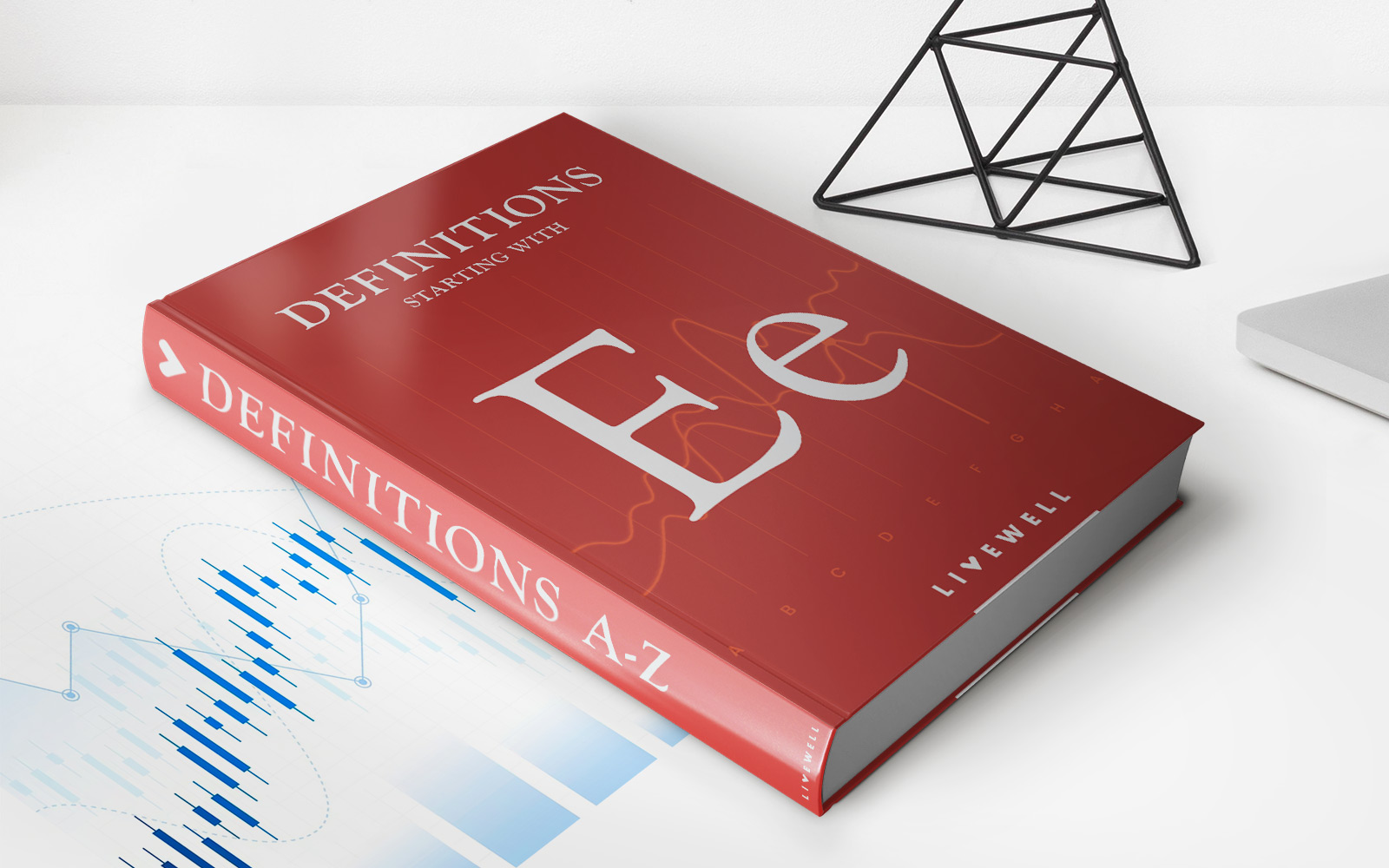Home>Finance>Why Would Selling A Core Asset Not Qualify As A Tax Planning Strategy


Finance
Why Would Selling A Core Asset Not Qualify As A Tax Planning Strategy
Modified: February 21, 2024
Learn why selling a core asset may not be considered a tax planning strategy and discover more about finance-related strategies.
(Many of the links in this article redirect to a specific reviewed product. Your purchase of these products through affiliate links helps to generate commission for LiveWell, at no extra cost. Learn more)
Table of Contents
- Introduction
- What is a Core Asset?
- Understanding Tax Planning Strategies
- The Role of Core Assets in Tax Planning
- Selling a Core Asset as a Tax Planning Strategy
- Factors to Consider in Selling a Core Asset
- Potential Benefits of Selling a Core Asset
- Potential Drawbacks of Selling a Core Asset
- Alternative Tax Planning Strategies
- Conclusion
Introduction
Tax planning is an essential aspect of managing one’s finances and minimizing tax liabilities. Individuals and businesses alike employ various strategies to legally reduce their tax obligations. One such strategy is the sale of a core asset.
A core asset is a significant holding that forms the foundation of an individual’s or company’s financial portfolio. It can be real estate, stocks, bonds, or any valuable asset that holds substantial value. While selling a core asset may seem counterintuitive, it can sometimes be an effective tax planning strategy.
This article explores the concept of selling a core asset as a tax planning strategy. We will delve into the definition of a core asset, understand tax planning strategies, examine the role of core assets in tax planning, and explore the potential benefits and drawbacks of implementing this strategy. Additionally, we will touch on alternative tax planning strategies to provide a comprehensive perspective.
Whether you are an individual looking to optimize your tax situation or a business owner seeking tax planning strategies, understanding the implications of selling a core asset can be invaluable. By weighing the potential benefits and drawbacks of this strategy, you can make informed decisions that align with your financial goals.
It’s important to note that tax laws and regulations vary across jurisdictions, so consulting with a qualified tax professional is always recommended before implementing any tax planning strategies. With that said, let’s dive into the world of selling core assets as a tax planning strategy.
What is a Core Asset?
A core asset is a fundamental component of an individual’s or company’s financial portfolio. It represents a significant holding that holds substantial value and often serves as the foundation for future growth and financial stability. Core assets can take various forms, including real estate, stocks, bonds, mutual funds, or businesses.
These assets typically exhibit characteristics such as longevity, stability, and long-term growth potential. They are considered essential because they provide a steady income stream, appreciate in value over time, or offer strategic benefits to an organization. Core assets are often meticulously chosen to align with the individual’s or business’s long-term financial goals.
For individuals, a core asset could be a primary residence, rental property, or a diversified investment portfolio. Real estate is often considered a core asset due to its potential for capital appreciation and rental income. Similarly, a well-diversified investment portfolio consisting of stocks, bonds, and mutual funds can serve as a core asset for individuals seeking long-term wealth accumulation.
For businesses, a core asset could be a flagship product, intellectual property, or a significant stake in a company. These assets provide the backbone of the business and contribute significantly to its profitability and success. A core asset for a business might also be a strategic partnership or an exclusive distribution agreement that gives the company a competitive advantage in the market.
Overall, the defining characteristic of a core asset is its ability to generate value, stability, and future growth potential. These assets often play a critical role in an individual’s or company’s financial strategy, and their management and optimization can significantly impact financial performance.
It’s important to regularly evaluate and reassess the composition of core assets to ensure they continue to align with changing financial goals. While core assets are typically held for the long term, certain circumstances may warrant their sale, including the implementation of tax planning strategies.
Now that we have a clear understanding of what core assets are, let’s explore the concept of tax planning and how core assets fit into this financial strategy.
Understanding Tax Planning Strategies
Tax planning is the process of organizing one’s financial affairs in a way that minimizes tax liabilities while remaining compliant with tax laws and regulations. It involves making strategic decisions regarding income, deductions, exemptions, and credits to optimize one’s overall tax position.
Tax planning strategies can vary depending on an individual’s or business’s financial circumstances and goals. These strategies may involve taking advantage of tax deductions, utilizing tax-advantaged accounts, implementing investment strategies, or utilizing legal entities to maximize tax benefits.
One of the primary objectives of tax planning is to legally minimize tax liabilities. By strategically managing income and expenses, individuals and businesses can reduce the amount of taxable income and, ultimately, the amount of tax owed. Effective tax planning can free up cash flow, increase savings and investments, and contribute to overall financial growth.
Tax planning strategies can be short-term or long-term in nature. Short-term strategies focus on immediate tax savings and may involve actions like timing income and expenses to maximize deductions or utilizing tax credits and exemptions. Long-term strategies, on the other hand, take into account the individual’s or business’s future financial goals and may involve creating tax-efficient investment portfolios or utilizing retirement savings accounts.
The effectiveness of tax planning strategies relies on proactive and careful analysis of one’s financial situation. It requires a thorough understanding of applicable tax laws, potential tax deductions and credits, and the ability to anticipate any changes or updates in tax regulations.
While tax planning strategies can provide significant benefits, it is crucial to engage in lawful practices and comply with all tax regulations. Consulting with a qualified tax professional is highly recommended to ensure that tax planning strategies align with the individual’s or business’s specific circumstances and goals.
Now that we have a solid understanding of tax planning strategies, let’s explore the role of core assets in tax planning and how selling them can be utilized as a tax planning strategy.
The Role of Core Assets in Tax Planning
Core assets play a significant role in tax planning strategies due to their inherent value and potential tax implications. These assets can offer unique opportunities for minimizing tax liabilities, generating tax-efficient income, and optimizing overall financial position.
One of the primary benefits of core assets in tax planning is their ability to provide tax-advantaged income. For example, if an individual owns a rental property as a core asset, the rental income generated may be subject to favorable tax treatment. Rental income is often taxed at a lower rate than regular employment income, and individuals can also take advantage of various deductions and depreciation allowances to further reduce their taxable rental income.
In the case of businesses, core assets can also provide opportunities for tax planning. For instance, if a company owns intellectual property rights, such as patents or trademarks, they may be eligible for special tax deductions or credits related to research and development expenses. By strategically managing these assets and leveraging eligible tax benefits, businesses can minimize their tax obligations and reinvest the savings into further growth and development.
Furthermore, core assets can serve as a source of liquidity when implementing tax planning strategies. Selling a core asset can generate a significant amount of cash that can be used to offset other taxable gains or income. This can be particularly valuable when individuals or businesses are looking to offset capital gains tax liabilities or reduce their overall taxable income in a specific tax year.
It’s essential to note that the tax implications of selling a core asset can vary depending on the nature of the asset and the specific tax laws and regulations in place. Capital gains taxes, depreciation recapture, and other factors can impact the overall tax consequences of selling a core asset as part of a tax planning strategy.
Ultimately, core assets provide a unique avenue for individuals and businesses to optimize their tax situations. By strategically managing and leveraging these assets, individuals and businesses can minimize their tax liabilities, generate tax-advantaged income, and strategically use the proceeds from the sale of these assets to offset other taxable gains or income.
In the next section, we will delve into the concept of selling a core asset as a tax planning strategy and explore the factors that need to be considered before implementing this strategy.
Selling a Core Asset as a Tax Planning Strategy
Selling a core asset can be a viable tax planning strategy under certain circumstances. By strategically timing the sale of a core asset, individuals and businesses can take advantage of tax benefits and optimize their overall tax position. However, it is crucial to carefully consider various factors before implementing this strategy.
One of the primary reasons for selling a core asset as a tax planning strategy is to offset capital gains tax liabilities. When an individual or business sells an asset that has appreciated in value, they may be subject to capital gains tax on the profit generated from the sale. By selling a core asset that has substantial gains, they can use the proceeds to offset other taxable gains or income, effectively reducing their capital gains tax burden.
Another reason for selling a core asset as a tax planning strategy is to utilize tax deductions or exemptions that are only available when certain assets are sold. For example, an individual may be eligible for the home sale exclusion if they sell their primary residence that they have owned and lived in for at least two out of the past five years. This exclusion allows them to exclude up to a specified amount of capital gains from the sale of their home, effectively reducing their taxable income.
Timing is a crucial factor when considering selling a core asset as a tax planning strategy. It is important to be aware of any favorable tax laws or regulations that may apply to the sale of certain assets. For example, if there are proposed changes in tax policies that would increase tax rates on capital gains, it may be beneficial to sell the asset before those changes take effect to take advantage of the current lower tax rates.
Additionally, it is important to evaluate the overall financial impact of selling a core asset. Selling a core asset may provide immediate tax benefits, but it could also have long-term implications on an individual’s or business’s financial portfolio. It is crucial to carefully assess the potential tax savings against the potential loss of future income or growth that the core asset could have provided.
Furthermore, it is essential to consider market conditions and transaction costs when selling a core asset. Selling an asset in a buyer’s market or when transaction costs, such as real estate commissions or brokerage fees, are high, may affect the overall financial outcome of the strategy. It is important to conduct thorough research and engage with professionals, such as real estate agents or financial advisors, to determine the optimal timing and method for selling the core asset.
Selling a core asset as a tax planning strategy can provide significant benefits in terms of minimizing tax liabilities and generating immediate cash flow. However, careful evaluation and consideration of factors such as capital gains taxes, potential tax deductions or exemptions, timing, overall financial impact, and market conditions are essential to ensure the success of the strategy.
In the next section, we will explore some potential benefits and drawbacks of selling a core asset as a tax planning strategy.
Factors to Consider in Selling a Core Asset
When considering selling a core asset as a tax planning strategy, it is important to carefully evaluate various factors to ensure a well-informed decision. These factors can have a significant impact on the overall financial outcome and success of the strategy. Here are some key factors to consider:
- Tax Implications: Assess the potential tax consequences of selling the core asset. Consider the impact on capital gains taxes, depreciation recapture, and any applicable tax deductions or exemptions. Consult with a tax professional to fully understand the tax implications specific to your situation.
- Timing: Evaluate the optimal timing for selling the core asset. Consider any proposed changes to tax laws or regulations that may affect tax rates or available tax benefits. Additionally, take into account market conditions and transaction costs to maximize the financial outcome.
- Overall Financial Impact: Assess the long-term financial implications of selling the core asset. Consider the potential loss of future income or growth that the asset could have provided. Evaluate the impact on your financial portfolio and long-term financial goals.
- Alternative Tax Planning Strategies: Explore alternative tax planning strategies that may achieve similar objectives without selling the core asset. Consider options such as utilizing tax-advantaged accounts, implementing investment strategies, or exploring legal entities for tax optimization.
- Market Conditions: Evaluate the current market conditions for the specific asset class. Consider trends, demand, and pricing. Selling the core asset in a buyer’s market may result in a lower sale price, whereas selling in a seller’s market could maximize profits.
- Transaction Costs: Take into account the associated transaction costs when selling the core asset. Consider factors such as real estate commissions, brokerage fees, legal fees, and any other costs incurred during the sale process. Assess how these costs impact the overall financial outcome.
- Professional Advice: Seek guidance from professionals, such as tax advisors, financial planners, or real estate agents, who have expertise in tax planning and the specific asset class. Their insights and knowledge can help inform your decision and ensure compliance with tax laws.
Each of these factors plays a crucial role in the success of selling a core asset as a tax planning strategy. Taking the time to thoroughly evaluate and consider these factors will enable you to make an informed decision that aligns with your financial goals and minimizes tax liabilities.
In the next section, we will explore the potential benefits and drawbacks of selling a core asset as a tax planning strategy.
Potential Benefits of Selling a Core Asset
Selling a core asset as a tax planning strategy can offer several potential benefits for individuals and businesses. By strategically selling a core asset, one can take advantage of tax benefits and optimize their overall financial position. Here are some potential benefits to consider:
- Tax Savings: Selling a core asset that has appreciated in value can help offset capital gains tax liabilities. By utilizing the proceeds from the sale to offset other taxable gains or income, individuals and businesses can potentially reduce their overall tax burden and increase their after-tax cash flow.
- Tax Deductions or Exemptions: Selling certain core assets may unlock specific tax deductions or exemptions. For example, the sale of a primary residence that meets certain criteria may qualify for the home sale exclusion, allowing individuals to exclude up to a specified amount of capital gains from their taxable income.
- Immediate Cash Flow: Selling a core asset can generate immediate cash flow that can be used for various financial purposes. Individuals can use the funds to pay off debts, invest in other income-generating assets, or reinvest in their business. This influx of cash can provide flexibility and contribute to overall financial stability.
- Rebalancing Portfolio: Selling a core asset provides an opportunity to rebalance one’s financial portfolio. By divesting from an asset that may have become over-concentrated or underperforming, individuals and businesses can reallocate those funds into other investments that may offer higher returns or better align with their financial goals and risk tolerance.
- Minimizing Risk: Selling a core asset can help in mitigating potential risks associated with market volatility or changes in economic conditions. By converting the asset into cash, individuals and businesses can protect themselves from potential future declines in value or uncertainty related to the asset.
- Taking Advantage of Market Conditions: Selling a core asset in a favorable market can lead to increased profits. If the asset class is experiencing high demand or increased pricing, individuals and businesses can capitalize on these market conditions and maximize their sale price, resulting in a greater financial benefit.
It’s important to note that the benefits of selling a core asset as a tax planning strategy may vary depending on several factors, including the specific asset class, tax laws and regulations, market conditions, and individual financial circumstances.
Before proceeding with selling a core asset, it is recommended to consult with professionals such as tax advisors, financial planners, or real estate agents who can provide tailored advice based on their expertise and your specific situation.
In the next section, we will explore the potential drawbacks or considerations to keep in mind when selling a core asset as a tax planning strategy.
Potential Drawbacks of Selling a Core Asset
While selling a core asset as a tax planning strategy can have potential benefits, it is important to consider the potential drawbacks and implications. Here are some potential drawbacks to keep in mind when considering the sale of a core asset:
- Loss of Future Income: Selling a core asset means forfeiting any future income or growth potential associated with that asset. For example, if an individual sells a rental property that was providing steady rental income, they will no longer have that income stream. It is crucial to assess the long-term financial impact and consider alternative sources of income.
- Liquidation Costs: Selling a core asset can incur various transaction costs, such as real estate commissions, brokerage fees, legal fees, and other related expenses. These costs can impact the overall financial outcome and may reduce the net proceeds received from the sale.
- Market Timing Risks: Attempting to time the market when selling a core asset carries inherent risks. Market conditions can be unpredictable, and attempting to sell at a peak or during favorable market conditions may not always be achievable. It is important to be mindful of potential fluctuations in market prices and recognize that timing the market perfectly is challenging.
- Tax Consequences: Although selling a core asset may provide tax benefits, it is essential to carefully consider the potential tax consequences. Capital gains taxes, depreciation recapture, and other tax obligations might apply. Consult with a tax professional to understand the specific tax implications and ensure compliance with tax laws and regulations.
- Reinvestment Risks: Reinvesting the proceeds from the sale of a core asset into alternative investments carries its own set of risks. Extensive research and due diligence are required to identify investment opportunities that align with the individual’s financial goals, risk tolerance, and anticipated returns.
- Loss of Asset Diversification: Selling a core asset may result in a loss of diversification within one’s financial portfolio. Diversification is essential for managing risk and maximizing returns. Before selling a core asset, consider how it will impact the overall diversification and risk profile.
- Impact on Long-Term Financial Goals: Selling a core asset can have implications for long-term financial goals. It is crucial to assess how the sale will align with your financial plan and discuss the impact with a financial advisor. Consider alternative strategies that may achieve similar goals without the need to sell the core asset.
It is important to evaluate these potential drawbacks and weigh them against the potential benefits when deciding whether to sell a core asset as a tax planning strategy. Each individual’s situation is unique, and it is recommended to seek professional advice from tax professionals, financial planners, or real estate experts to make an informed decision.
In the next section, we will explore alternative tax planning strategies that can be considered as alternatives to selling a core asset.
Alternative Tax Planning Strategies
While selling a core asset can be a tax planning strategy, it is not the only option available. There are alternative strategies that individuals and businesses can consider to optimize their tax position. Here are some alternative tax planning strategies to explore:
- Utilize Tax-Advantaged Accounts: One effective strategy is to maximize contributions to tax-advantaged accounts such as Individual Retirement Accounts (IRAs), 401(k)s, or Health Savings Accounts (HSAs). These accounts offer tax benefits such as tax-deductible contributions, tax-deferred growth, and tax-free withdrawals under certain circumstances.
- Manage Capital Gains and Losses: Instead of selling a core asset, individuals can strategically manage capital gains and losses in their investment portfolio. By offsetting capital gains with capital losses, individuals can reduce their overall tax liabilities. Consider tax-loss harvesting or rebalancing the portfolio to optimize capital gains and losses.
- Implement Charitable Giving Strategies: Charitable giving can provide both tax benefits and the opportunity to support causes individuals care about. By donating to qualified charitable organizations, individuals can potentially deduct the donated amount from their taxable income. It’s important to understand the rules and limitations surrounding charitable deductions.
- Maximize Business Expenses and Deductions: Business owners can explore strategies to maximize business expenses and deductions, which can significantly reduce their taxable income. This includes careful record-keeping, identifying eligible business deductions, and leveraging tax credits or incentives available to businesses.
- Utilize Tax Loss Carryforwards or Carrybacks: If there have been significant capital losses in previous years, individuals can carry those losses forward to offset future capital gains. Alternatively, in some cases, losses can be carried back to offset gains from previous years, resulting in potential tax refunds.
- Consider Entity Structuring: Reviewing and optimizing the legal structure of a business can have significant tax implications. Exploring options such as forming a limited liability company (LLC), S-corporation, or C-corporation can provide potential tax advantages and liability protection.
- Incorporate Tax-Efficient Investment Strategies: Implementing tax-efficient investment strategies can help individuals minimize tax liabilities. This includes strategies like tax-loss harvesting, investing in tax-advantaged assets, or utilizing tax-efficient investment vehicles like index funds or ETFs.
It’s important to note that the effectiveness of these alternative tax planning strategies will depend on individual circumstances, applicable tax laws, and financial goals. Consulting with tax professionals or financial advisors experienced in tax planning is recommended to tailor these strategies to your specific situation.
By exploring these alternative tax planning strategies, individuals and businesses have options to optimize their tax position without necessarily needing to sell a core asset. Each strategy has its own considerations and requirements, so it is crucial to assess them in context with your financial goals and consult with professionals as needed.
In the concluding section, we will summarize the key points discussed and emphasize the importance of seeking professional advice in tax planning.
Conclusion
Tax planning is a critical aspect of managing personal and business finances, and selling a core asset can be a viable strategy to optimize one’s tax position. However, it is crucial to carefully evaluate the potential benefits and drawbacks before proceeding with this strategy.
Throughout this article, we have explored various aspects of selling a core asset as a tax planning strategy. We began by defining core assets as significant holdings that provide stability, value, and potential growth to an individual or business. We then delved into tax planning strategies, emphasizing the importance of proactive financial management to minimize tax liabilities while remaining compliant with tax laws.
We discussed how core assets play a significant role in tax planning, offering opportunities for tax-advantaged income, liquidity, and offsetting capital gains taxes. We also highlighted the factors to consider before selling a core asset, including tax implications, timing, overall financial impact, market conditions, transaction costs, and professional advice.
While selling a core asset can have potential benefits such as tax savings, immediate cash flow, and rebalancing one’s portfolio, there are also potential drawbacks to consider. These drawbacks include the loss of future income, transaction costs, market timing risks, and potential taxes that may arise.
It is important to remember that selling a core asset may not be the only tax planning strategy available. We discussed alternative strategies, such as utilizing tax-advantaged accounts, managing capital gains and losses, charitable giving, maximizing business deductions, and implementing tax-efficient investment strategies.
Ultimately, tax planning is a complex and dynamic area that requires careful consideration of personal and business financial goals, applicable tax laws, and market conditions. Seeking professional advice from tax specialists, financial advisors, and legal professionals is crucial in navigating the intricacies of tax planning.
By staying informed, evaluating options, and consulting with professionals, individuals and businesses can make informed decisions to optimize their tax position while maintaining long-term financial growth and stability.
Disclaimer: This article is for informational purposes only and should not be construed as legal, tax, or financial advice. It is recommended to consult with qualified professionals for personalized advice based on individual circumstances.














